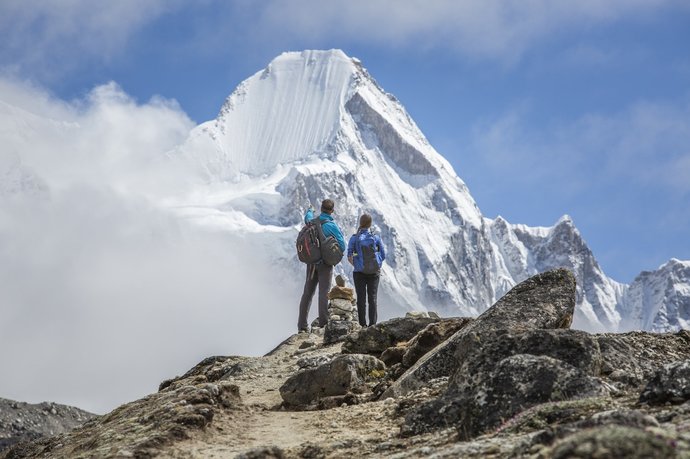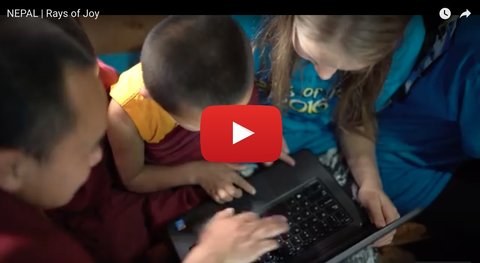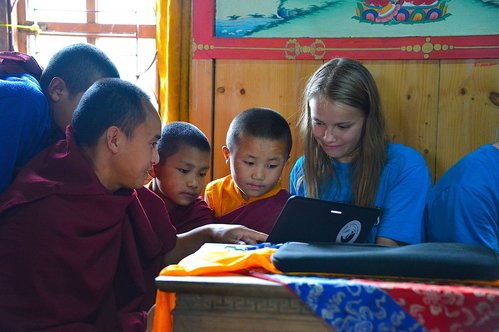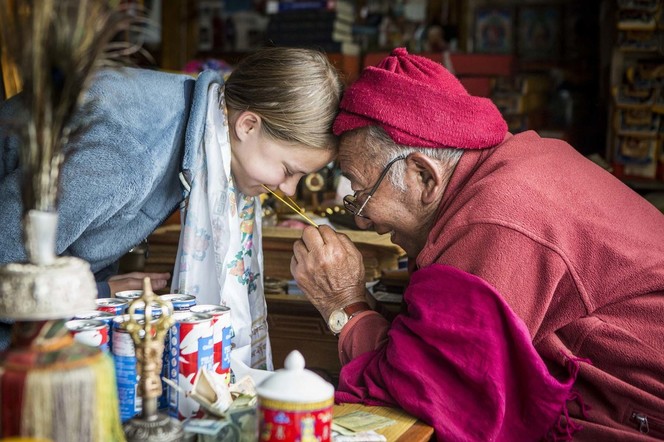An Interview with Mike and Lilliana Libecki
By: Victoria Ortiz
By: Victoria Ortiz
Adventure Scientist and National Geographic Explorer Mike Libecki wants to complete 100 expeditions by the time he’s 100 years old. He also strives to be the best father on the planet. And for the creative and passionate father/daughter duo, the two goals are not mutually exclusive.
In June of 2016, Mike and his 13-year-old daughter Lilliana trekked 150+ miles in the Himalayas in Nepal for “wonderful humanitarian efforts, adventure, and ultimate joy.” Their incredible crew captured the experience to distribute solar equipment, Dell Computers, a divvy water filtration system, and gifts to monasteries, schools, and medical clinics in a short film appropriately dubbed “Rays of Joy.”
Along the way they collected water and scat samples for Adventure Scientists Global Microplastics Initiative and Global Microbe Study. We caught up with Mike and Lilliana to ask them about their expedition and traveling as a dad and daughter team.
“Any true explorer or adventurer is also someone giving back and making efforts to better the quality of life of our planet and people.” – Lilliana Libecki
VO: Why did you plan this expedition, and why Nepal (other than the epic climbing)?
ML: This expedition to Nepal was my daughter’s idea. After her trip to Africa last year to climb Kilimanjaro and do humanitarian work at orphanages, she was a changed person. She wants to do her part to help the people and planet. This was her third expedition, and she has now been to 21 countries and all seven continents. She loves to explore and travel, and truly believes that we need to be the change we want to see.
ML: This expedition to Nepal was my daughter’s idea. After her trip to Africa last year to climb Kilimanjaro and do humanitarian work at orphanages, she was a changed person. She wants to do her part to help the people and planet. This was her third expedition, and she has now been to 21 countries and all seven continents. She loves to explore and travel, and truly believes that we need to be the change we want to see.
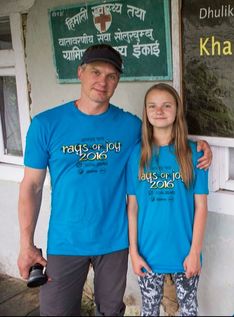 Mike and Lilliana Libecki, Photo by Andy Earl.
Mike and Lilliana Libecki, Photo by Andy Earl.
VO: You have been an adventurer and advocate for Adventure Scientists for a long time. Was this trip the first time you and your daughter gathered data together?
VO: You have been an adventurer and advocate for Adventure Scientists for a long time. Was this trip the first time you and your daughter gathered data together?
ML:
Yes, this was the first trip that we gathered samples together. We were happy to help gather water samples and scat samples with Adventure Scientists for efforts towards keeping our Mother Earth healthy. We are planning on gathering these samples and anything else we can do on every trip we do, such as during our upcoming trips to Antarctica, Peru, Greenland, Afghanistan and others. 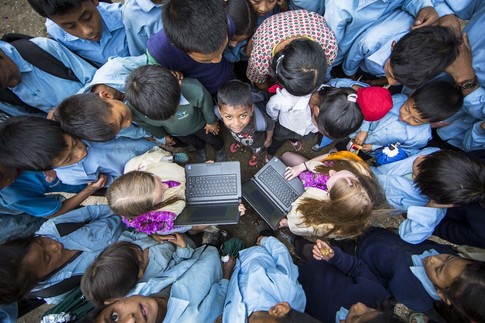 Lilliana and crew teaches school children how to operate their new computers. Photo Andy Earl.
Lilliana and crew teaches school children how to operate their new computers. Photo Andy Earl.
VO: What was the most impactful moment of this expedition for you?
ML: The most powerful single moment for me was in a pretty crazy storm at 18,000 feet as we were climbing up to Lobuche East. Seeing her focus, optimism, courage, and especially her positive attitude was special and impressive.
Overall, I loved seeing my daughter Lilliana, now 13 years old, being part of a team and our global community, interacting with kids her age and teaching them how to use the new computers she brought, and the camaraderie and joy with that. It’s incredible to see her discover her passion to help people and our planet.
ML: The most powerful single moment for me was in a pretty crazy storm at 18,000 feet as we were climbing up to Lobuche East. Seeing her focus, optimism, courage, and especially her positive attitude was special and impressive.
Overall, I loved seeing my daughter Lilliana, now 13 years old, being part of a team and our global community, interacting with kids her age and teaching them how to use the new computers she brought, and the camaraderie and joy with that. It’s incredible to see her discover her passion to help people and our planet.
VO: What’s it like to be on an expedition together?
ML: It’s not just a daddy/daughter team; we are partners on these trips like the rest of the team. She is learning so much from these very real life experiences. I am incredibly inspired by my daughter, and my hope is that the world will be too. She inspires me to inspire her.
ML: It’s not just a daddy/daughter team; we are partners on these trips like the rest of the team. She is learning so much from these very real life experiences. I am incredibly inspired by my daughter, and my hope is that the world will be too. She inspires me to inspire her.
“In a world where we can be and do anything, be kind and do good.” – Lilliana Libecki
VO: What advice would you give parents that are thinking about going on expeditions with their kids?
ML: Well that is an easy one…GO. Simple. Prepare, plan, focus, bring good antibiotics, and GO. Most importantly, the time is now…what are you waiting for? No excuses.
ML: Well that is an easy one…GO. Simple. Prepare, plan, focus, bring good antibiotics, and GO. Most importantly, the time is now…what are you waiting for? No excuses.
Sample Results: Mike and Lilliana collected three water samples in Nepal, which contained 7 blue filaments, 7 red filaments, 2 transparent filaments, 3 black filaments, 1 green filament, 2 blue and clear filaments, and 2 yellow filaments.
All eight samples subjected to Fourier Transform Infrared Spectroscopy (FTIR) Analysis
were determined to be polyester. This is important to note, because polyester is more dense than water and would thus sink instead of float near the surface to be picked up in a surface water sample. The polyester could have shown up in the sample because Mike sampled near a camp or village that had a high density of occupants who wash their clothes in the water. The water body would also have to have currents that would bring the polyester back up to the surface. It’s also possible that the polyester was contamination.Find out more about our Global Microplastics Initiative and other Adventure Scientists projects by visiting our website and by following us on Facebook, Twitter and Instagram.

